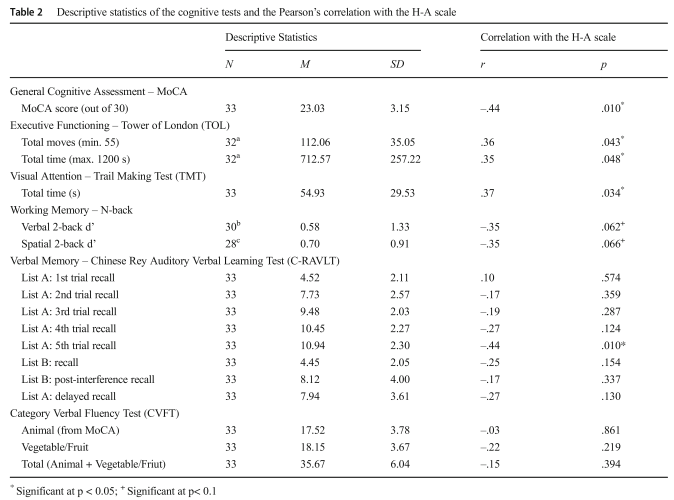There are certain truths in life that we may find difficult to accept. Some of these truths include admitting when we’re wrong, admitting when we’ve been beaten, and if you’re anything like me, admitting when you’ve gained a couple of pounds around the midsection (you know the ones that have inspired our New Year’s resolution to join a gym).
In the famous words of Jack Nicholson from the film A Few Good Men, “You can’t handle the truth!” In fact, one of the biggest truths we have a hard time digesting is the fact that we are getting old.
As proof, in 2016, the global Anti-Aging Market (the sale of products such as anti-wrinkle cream, hair color products, etc.) was worth $250 billion, and expected to increase further over time. In other words, people are willing to spend a large amount of money to disguise the physical signs of aging.
But what about the cognitive signs?
In a recent article published in the Psychonomic Bulletin and Review, researchers Cynthia Chan, Antoni Chan, Tatia Lee, and Janet Hsiao explored one aspect of cognitive aging, namely the relationship between eye-movements during face recognition and age. The researchers’ goal was to determine if eye-movement patterns could be linked to cognitive ability in older adults.
Chan and colleagues sought to evaluate whether older and younger adults adopt different eye-movement patterns and if these patterns could potentially be used as a screening tool for more general cognitive decline. To address these questions, the researchers administered a face recognition task to a group of older and young adults while recording their eye movements.
Two types of eye movement patterns were examined: holistic and analytic. The holistic pattern refers to eye movements that are fixated on the area around the center of the face (i.e. the nose). The analytic pattern refers to eye movements that are more dispersed and volley between the two eyes and center of the face. The figure below illustrates the distinction with eye-movement patterns ranging from analytic to holistic.

In the task, participants were fitted with an eye tracker and instructed to keep their heads positioned on a chin rest throughout the entire experiment. During study, participants were shown 20 face images with neutral expressions and with the hair cropped out (as in the preceding figure).
The faces were displayed one at a time, for five seconds each. At test, participants were shown the same 20 faces, along with 20 new faces and were asked to judge whether they saw each face during the study phase.
Performance patterns in the face recognition task were analyzed using Hidden Markov Models (HMM), a tool derived from machine learning. HMMs can be used to evaluate individual differences in eye-movements. Briefly, the models assume that current eye fixations are contingent on previous eye fixations, and that the transition between successive movements is governed by latent (or “hidden”) states that represent regions of interest in the face stimulus. Performance from each participant in the task was summarized by a HMM, and the HMMs were then grouped based on similarity (whether the models more closely resembled the holistic and analytic pattern).
The results of this study were interesting. First, the HMMs for older adults more often resembled the holistic pattern of eye movements, whereas the models for young adults resembled the analytic pattern. Also, the use of the analytic pattern resulted in better face recognition regardless of age.
To determine if eye-movement patterns could be used as a screening tool of cognitive ability, the researchers conducted an additional experiment on older adults. They administered the face recognition test described above along with a battery of age-related tests used to assess cognitive decline.
The battery included the Montreal Cognitive Assessment (MoCA), Tower of London test, Trail Making test, Verbal and Spatial Two-back test, Chinese Rey Auditory Verbal learning test, and the Category Verbal Fluency test. Collectively, these tests assess executive functioning, short term memory, planning, visual attention, and verbal processing, respectively.
The results revealed that eye-movement patterns in older adults were associated with cognitive ability. In particular, the use of the holistic pattern was associated with MoCA performance, such that the more holistic the pattern, the lower the MoCA score. The eye-movement patterns were also associated with executive functioning and planning (Tower of London test) and visual attention and processing speed (Trail Making test). However, they were not strongly correlated with delayed verbal memory or verbal fluency.
The table below summarizes the correlations between eye-movement patterns (Holistic vs. Analytic; i.e., H-A scale) and performance on the battery of cognitive tests. Note in particular the relatively substantial correlation between the MoCA and eye movements (r = -.44; row 1).

Taken together, the results of these experiments suggest that older adults adopt a pattern of eye-movements (holistic pattern) that is associated with poorer face recognition performance relative to the pattern employed by younger adults (analytic pattern). Importantly, HMMs fit to individual data can be used to capture these eye-movement patterns. In addition, the pattern of eye-movements used during face recognition can provide insight into the level of cognitive decline in older adults.
So while we may dye our hair or stock up on anti-wrinkle cream to disguise the physical signs of aging, the cognitive evidence may not be as easily masked. But let us not forget that there is beauty and wisdom that comes with age. In the famous words of my maternal grandfather, “I don’t get older, I get better and like a fine wine, I improve with time!”
Featured Psychonomic Society article:
Chan, C.Y.H., Chan, A. B., Lee, T. M. C., & Hsiao, J. (2018). Eye-movement patterns in face recognition are associsted with cognitive decline in older adults. Psychonomic Bulletin & Review, DOI 10.3758/s13423-017-1419-0.
